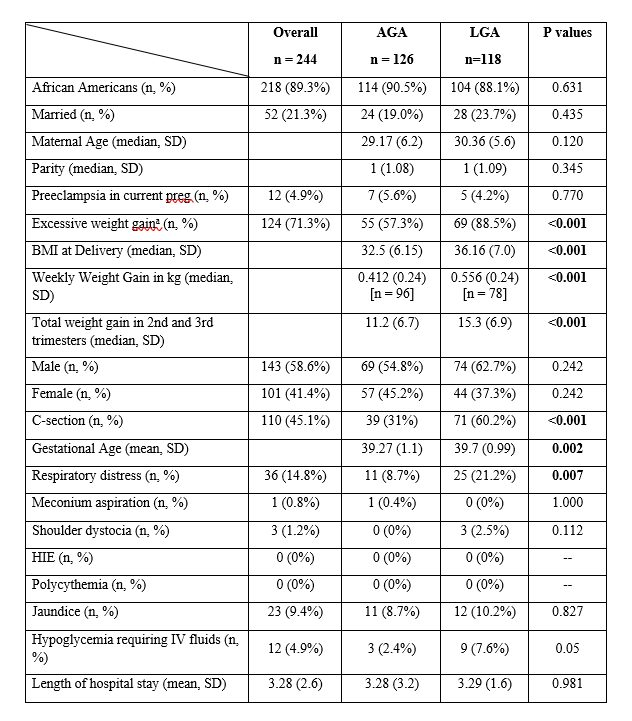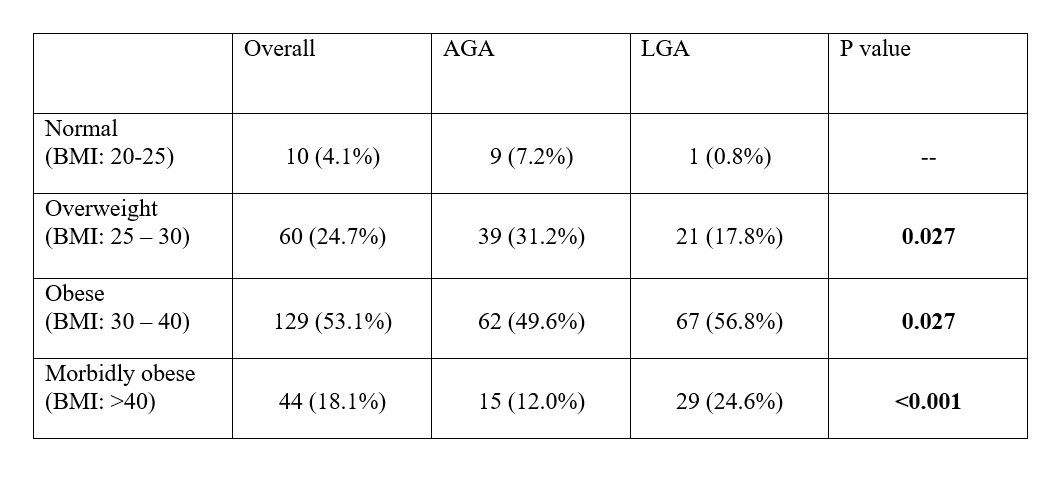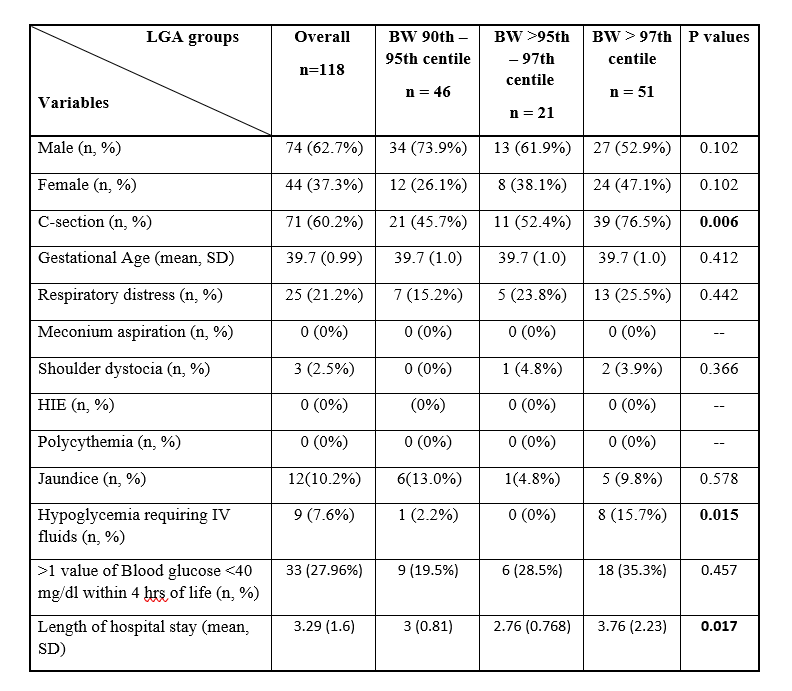Neonatal General
Neonatal General 10: Outcomes
73 - Adverse Neonatal Outcomes of Large for Gestational Age Neonates in a Predominantly African- and Caribbean-American Inner-City Population
Monday, May 1, 2023
9:30 AM - 11:30 AM ET
Poster Number: 73
Publication Number: 73.429
Publication Number: 73.429
Pavani Chitamanni, State University of New York Downstate Medical Center College of Medicine, Brooklyn, NY, United States; Kahmun Lo, SUNY Downstate, New York, NY, United States; Molly A. Schneider, SUNY Downstate Health Sciences University, Brooklyn, NY, United States; Lawrence Fordjour, State University of New York Downstate Medical Center College of Medicine, Brooklyn, NY, United States

Pavani Chitamanni, MBBS (she/her/hers)
Resident Physician
State University of New York Downstate Medical Center College of Medicine
Brooklyn, New York, United States
Presenting Author(s)
Background: The prevalence of obesity in adults and children continues to rise. The prevalence of obesity in adults and children continues to rise. Nationally, 41.9 % of adults are obese, with highest level observed in African American population - 49.9%. In addition, obesity rates for African American kids increased from 19.5% to 23.8% in the last decade. Large for Gestational Age (LGA) births are associated with increased risk for perinatal morbidity as well as potential long-term childhood complications.
Objective: To study the maternal, perinatal and neonatal factors associated with LGA term births in an African- and Caribbean-American inner-city population and to assess risk factors and outcomes associated with LGA babies.
Design/Methods: We performed a retrospective chart review of term LGA and AGA babies born at SUNY Downstate University Hospital of Brooklyn between 2018 and 2021. LGA was categorized into 3 groups as 90th- 95th, 95th - 97th and >97th Birthweight (BW) percentiles. BW centiles were corrected for infant sex and gestational age using the interactive web application z-score calculator (Aris et al). Maternal Body Mass Index (BMI) was categorized as normal (20-25), overweight (25-30), obese (30-40) or morbidly obese ( >40). Neonatal, maternal and peripartum outcomes were identified and analyzed using one-way ANOVA and Chi square tests.
Results: The total number of live births included was 3991, of which 2.95 % were LGA. Among LGA babies, median maternal age was 30 years, median parity was 1. About 76% were single mothers and 88% were African American women. The median weight gain in the last 2 trimesters was15.39 kg, the median BMI was 36.16. Over 99% of LGA neonates were born to mothers with BMI > 25 and 88.5% of mothers had excessive pregnancy weight gain (Table 1). Pregnancy complications included gestational diabetes mellitus (11%), preeclampsia (4.2%) and C-section rate was 60%, as compared to 30% in AGA babies. The male: female ratio was 63:37, the median gestational age was 39 weeks (37-42weeks) and median BW was 4178 g among LGA babies. Significant neonatal morbidities included respiratory distress (21.2%), hypoglycemia (7.6%), jaundice (10.2%) and shoulder dystocia (2.5%). Babies with BW above 97% had higher C-section rate, incidence of hypoglycemia requiring IV fluids and increased hospital length of stay.
Conclusion(s): This study suggests that LGA babies have higher risk of complications, especially with BW above 97%. Increased neonatal, maternal and perinatal complications necessitate further evaluation of antenatal and pregnancy factors in order to improve care for this community.



